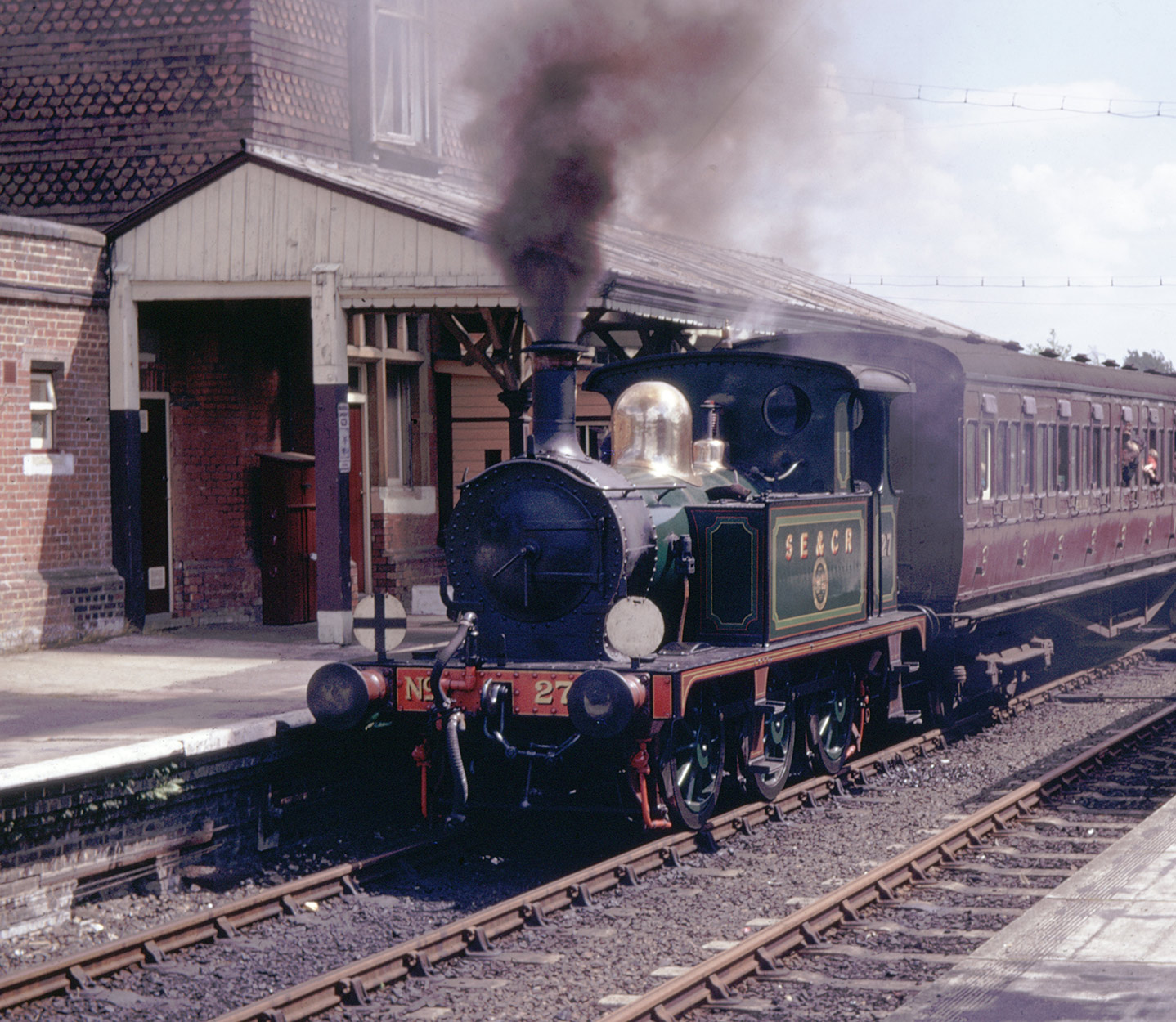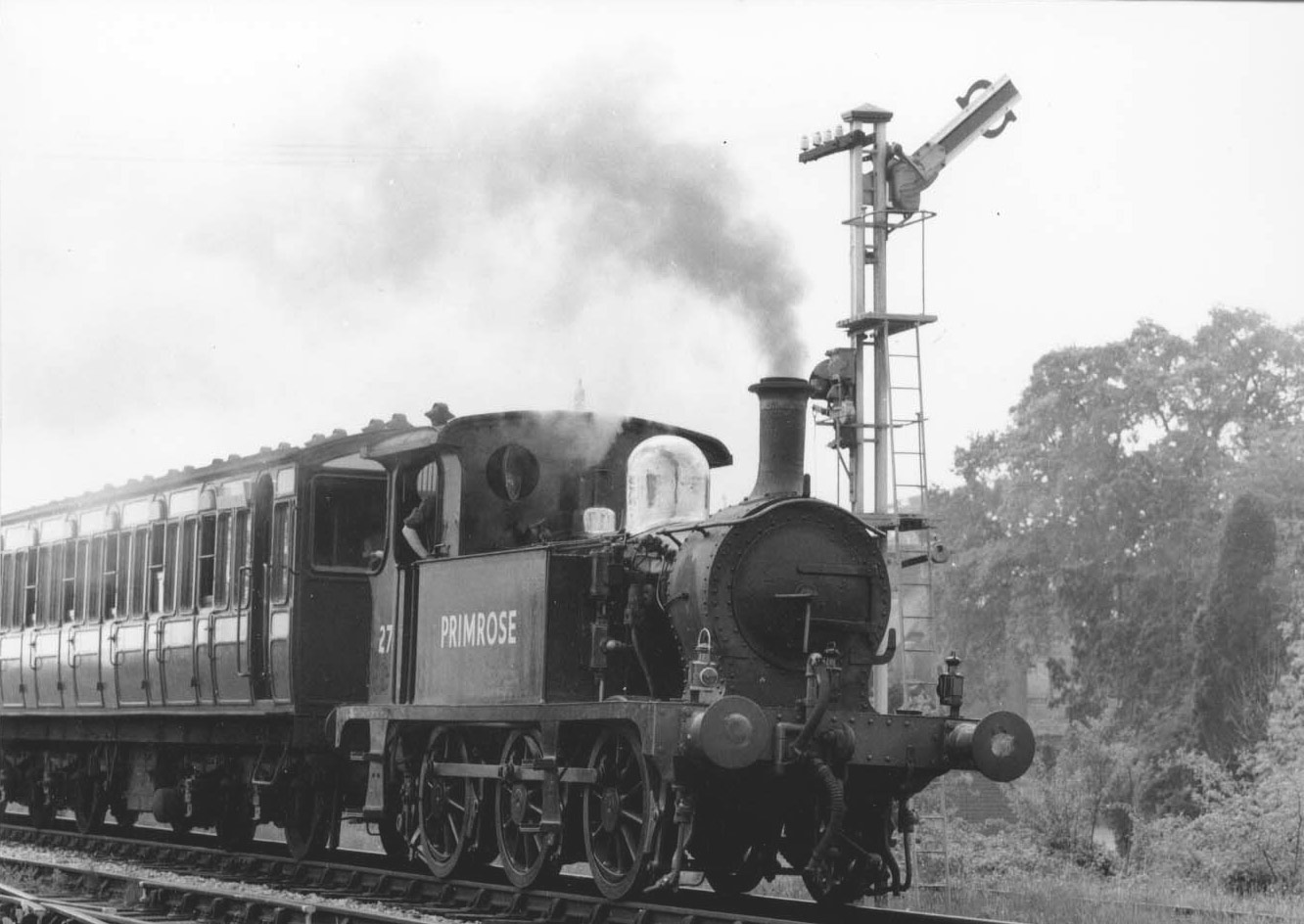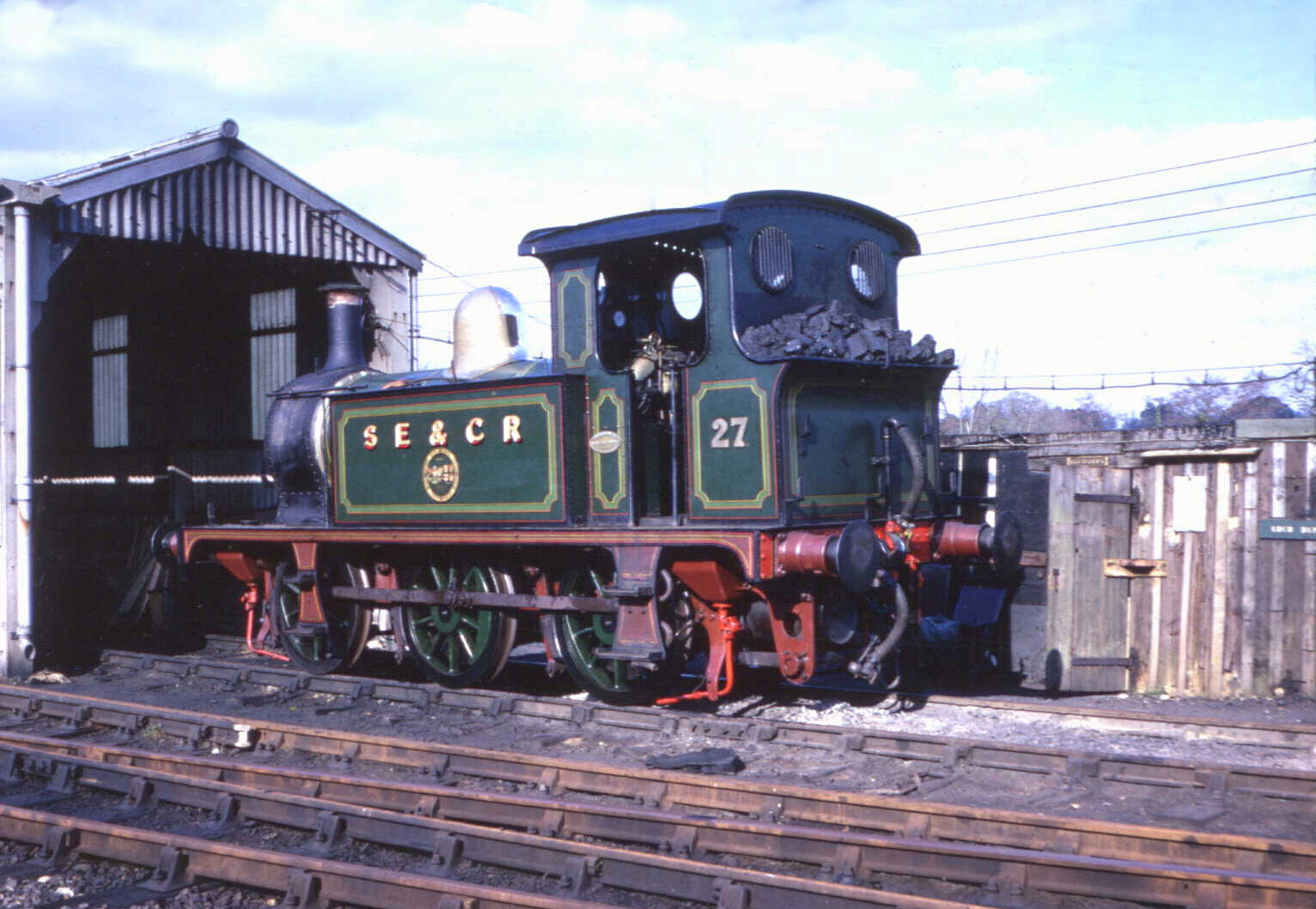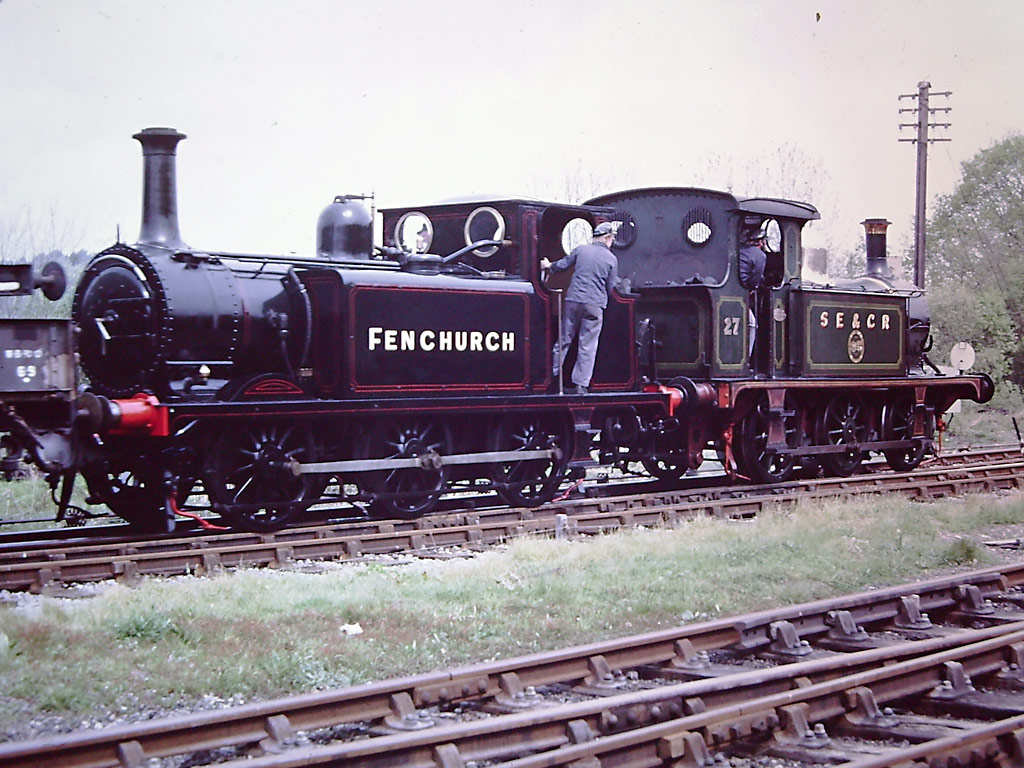
The restoration of SECR P-class locomotive No. 27
The restoration began when the loco was dismantled in 1978 for a “quick” overhaul, but, as was so often the case at the time, this was found to be beyond the skills of the basic workshop capability we had back then, so the restoration stalled.
A restart on the restoration of No. 27 to working condition is now well under way following a delay of nearly 30 years. The work on the locomotive is being undertaken by the Villas Gang and other volunteers, supported by the fund raising efforts of the ‘Fenchurch Fund’, the combined efforts coming under the banner of the Little Loco Group’s Project 27. Major work is required on the boiler and the replacement of the frames and cylinders of the locomotive, as well as some significant mechanical renewal and replacement of plate work, including the tanks.
The Project 27 Appeal has already managed to raise a good part of the predicted £150,000 needed to restore 27 back to working order. To complete the overhaul we need your support.
More info about the South Eastern & Chatham Railway P-class No. 27
The P-class tank locomotives were, in design terms, an updated copy of the LBSCR Terriers. There were eight built in 1909/1910 and they were used initially to supplement and replace a series of steam railmotors which had been bought only a few years before, and which were proving underpowered. The P-class locos were only marginally more successful than the railmotors, and were themselves quickly overtaken by increasing traffic and heavier loads. From 1912, they were increasingly relegated to shunting duties, as shed and station pilots, a role for which, with the unsurpassed SECR-designed steam reverser, they were ideal. No. 27 was re-allocated to Reading shed in July 1914.
From 24 April 1915 until 30 October 1916, No. 27 together with No. 753 (now preserved on the KESR) was engaged in military work, being shipped across the Channel for war service at Boulogne. The SECR were contracted to construct exchange sidings at the docks in Boulogne for the transhipping of Munitions and other stores. Whilst there she was painted unvarnished olive green and numbered as ROD No. 5027.
The members of the class were common at places such as Dover (27 appears to have spent much of its time there from 1945 onwards), and from 1938 onwards were the only locomotives allowed to shunt Kingston Wharf at Shoreham Harbour.
As BR No. 31027 the loco came to the Bluebell in 1961, the Railway’s third engine, and for two years carried the name “Primrose” (and number 27) as seen in Ken Chown’s photo above right of it on the Newick Spur just south of Sheffield Park station. In 1963 it was repainted into full SECR passenger livery, and, with No. 323, was a mainstay of the Bluebell’s operational fleet for much of that decade, carrying the flag forward into the early 1970s. It has been said that it has only been in preservation days that the P-class have been able to demonstrate their true usefulness, with their greater water capacity compared to a Terrier proving quite an advantage. No. 27 was withdrawn from traffic in November 1974 and stored prior to restoration.
More recent and current news is posted on the PROJECT 27 BlogSpot, on the Little Loco Group web site, and on Facebook.








